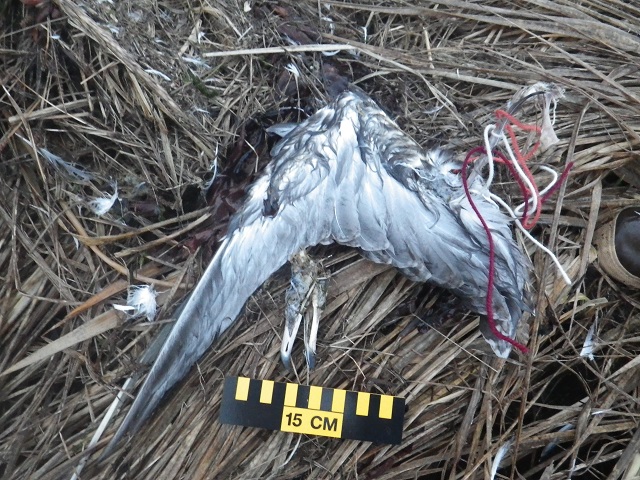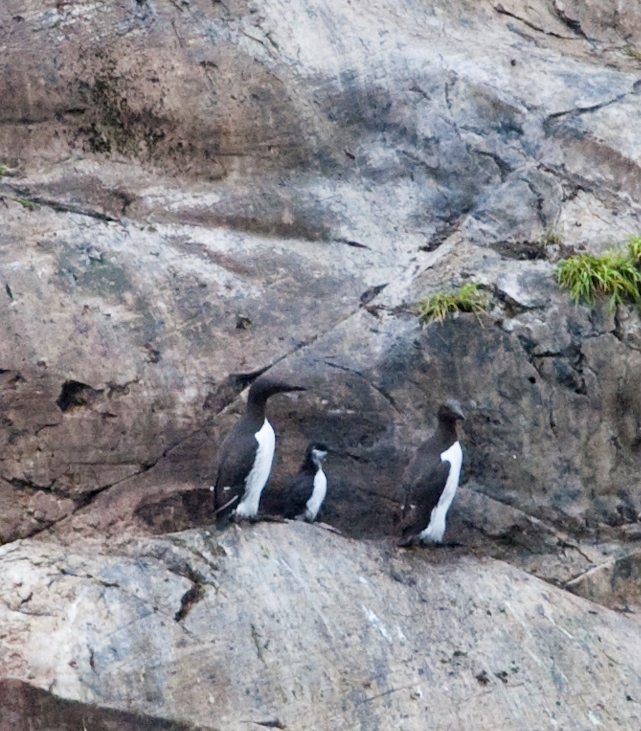
COASST surveyors measure the wing of a juvenile glaucous-winged gull found dead on the shoreline near Halibut Point. Surveyors attach color coded biodegradable yarn to seabird carcasses to ensure that each carcass is counted only once. NPS Photo
Park biologists and local residents were inspired to join the COASST program after a massive die-off of common murres from 2015-2016. Common murres, often seen nesting in the summer on South Marble Island in Glacier Bay, are deep diving seabirds with high metabolic rates that require abundant small fatty fish within their diving range (up to 600 feet!) throughout the winter. Beginning as early as March of 2015, dead murres began washing up on beaches from California to the Gulf of Alaska with encounter rates up to 20 times greater than normal at COASST observation beaches. In early December, 2015, dead murres were observed in Bartlett Cove, the Gustavus beach, and other locations in Glacier Bay and Icy Strait. With no previous baseline of dead birds on specific beaches, biologists could not measure the extent of the die-off in this region. However, park employees began regular counts of dead murres on the Bartlett Cove dock, where otters drug the carcasses to consume. By the end of January 2016, over 120 dead murres had been found on the dock alone. Examinations of five intact carcasses found starvation to be the cause of death. Elsewhere in the state, thousands of dead murres were found and the final estimate of the mortality was in the hundreds of thousands - the biggest die-off ever recorded.

Common murres with chick on South Marble Island in 2009. NPS Photo
Seabirds are excellent indicators of ocean health because they feed almost exclusively on marine animals, and biologists are able to count them when they are on the surface of the water or wash up dead on the beach, as well as measure their breeding success at shoreline rookeries. The common murre die-off has been attributed to rising ocean temperatures in North Pacific, specifically the presence of the “Blob”, a patch of ocean with sea surface temperatures up to 5 degrees F warmer than usual that persisted from 2013 through 2015. Warm ocean temperatures can be harmful to seabirds for several reasons: small fatty fish prefer colder water so likely remain too deep for birds to hunt when the sea surface is warm, warm water decreases productivity of small schooling fish so there are fewer to eat, and warm water also increases the metabolism of predatory fish who compete with seabirds for small fish. Luckily the Blob has dissipated, but sea surface temperatures continue to rise along with air temperatures across the planet. Given this outlook, continued seabird monitoring is imperative. Thank you COASST volunteers!

NPS biologists Craig Murdoch and Tania Lewis conducting monthly COASST survey at Halibut Point on January 31, 2017. NPS Photo
